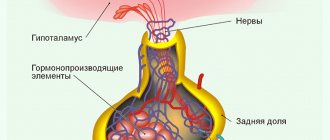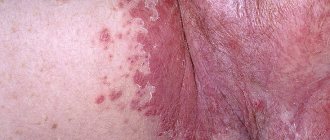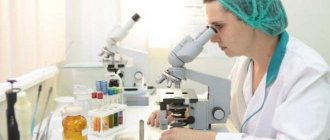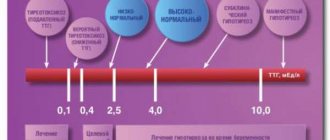Many women know firsthand what hormonal imbalance in the body is.
To prescribe the correct therapy, you should know what the hormone estrogen is responsible for in women. Estrogens are secreted in a woman's ovaries and may be present in minor concentrations in the male epididymis, as well as in the adrenal glands .
The hormone estrogen, what is it responsible for in women? Female hormones estrogens are a very important link in ensuring the full function of the reproductive system organs in the female body.
What do doctors know about breast cancer?
Very, very, very much.
And rest assured, medical knowledge is not limited to the above facts. There is no universal cancer that affects different organs of our body.
Oncology is diverse, there are many types of tumor activity - this also applies to breast cancer.
In order to successfully fight cancer and reduce the risk of relapse, oncologists study the tumor in various ways, determining its features, down to its molecular structure.
An important aspect of breast cancer therapy is determining whether the tumor is hormone-dependent or hormone-negative.
This is the first priority after a biopsy or surgery. Depending on the results obtained, doctors will decide on a treatment strategy.
Symptoms
A woman may suspect an increase in estrogen levels based on the following symptoms:
- stomach ache;
- engorgement of the mammary glands;
- increased sensitivity of the nipples;
- menstrual irregularities;
- the appearance of extra pounds;
- the appearance of rashes in the form of acne;
- hair loss;
- hypertension;
- dizziness;
- nausea;
- vomit;
- digestive disorders;
- fast fatiguability;
- irritability;
- sleep changes.
The severity of symptoms when estrogen levels increase largely depends on the general health and age of the woman.
A long period of increased estrogen levels can lead to the development of the following diseases and conditions:
- increased blood clotting and blood clot formation;
- pathologies of the thyroid gland;
- osteoporosis;
- obesity;
- the appearance of seizures;
- absence of pregnancies;
- menstrual irregularities;
- development of mastopathy and breast cancer;
- disorders of the nervous system and psyche.
To determine the reason for the increase in estrogen levels, the gynecologist draws up a plan for further examination of the woman and, if necessary, prescribes consultations with other specialized specialists (for example, an endocrinologist, gastroenterologist, cardiologist, etc.).
What do hormones have to do with cancer?
If we are talking about breast cancer (and some other organs), then the relationship is very direct. Our breasts are a hormone-dependent organ; their work is influenced by progesterone, estrogen and prolactin (and some others, but more about them another time).
Hormones are active substances; they are responsible for the effective functioning of various body systems, including cell division.
In cases where the tumor is sensitive to hormones, its growth may accelerate or intensify. Suppressing the production of estrogen and progesterone helps control the tumor and reduce the risk of it returning after chemotherapy or surgery.
Dopamine
© Rido
Dopamine is another hormone that makes us happier,
This chemical is part of the reward system in the brain - what gives us a feeling of pleasure and makes us want more.
Recognizing your efforts gives a powerful boost to that happiness hormone. Dopamine is also released when you set realistic goals for yourself and achieve them naturally.
Dopamine is considered the lever of motivation in this system and is naturally released when you look at food or sex, but before consuming it.
Procrastination, self-doubt and lack of enthusiasm
are the result of low dopamine levels.
About 90 percent of all dopamine is produced in the gut. Studies in rodents have shown that intestinal flora plays an important role. There is also evidence that Parkinson's disease may be caused by problems with the transmission of dopamine to nerve cells.
How dopamine is produced
- Look for enjoyable and rewarding activities
that have a positive impact on your life.
- Spend more time on Sun
to increase sensitivity to dopamine.
- Practice deep breathing and meditation.
- Get enough sleep
.
- Eat more nuts and legumes.
How is this related to breast cancer?
The oncological process involves cell mutation.
A number of cells change beyond recognition - they cease to be similar to their “neighbors” both externally and functionally. Others change, but not so much that they stop responding to external stimuli.
When we talk about breast cancer, we need to remember that the cells of many tumors retain receptors for sex hormones, which means that such cancer is more prone to cell division and the formation of metastases.
Do you get an annual mammogram?
Yes, it is important
0%
No, I don't have time
0%
What are estrogens in women
The impact of estrogen on the female body begins with sexual health, but it plays a much more important role in various other areas of health, ranging from the reproductive system to bone health. The effect of estrogen on a woman’s body affects metabolism, sexual function and even mood. The role of estrogen in a woman’s body is especially noticeable during menopause.
Low estrogen levels during menopause can change physiology and bone density, as well as cause urinary tract problems. To combat these problems, many women replace the hormone estrogen with hormone replacement therapy, which replenishes the body's supply of estrogen. There are other ways to increase estrogen levels. It may be noted that estrogens are contained in some foods.
Natural complexes[/mask_link] containing estrogens can be ordered on iHerb.
Where is estrogen produced in women? Estrogens are produced primarily in the ovaries in women and in small quantities in the testicles in men. Estrogens are also produced in the liver and adrenal glands. Symptoms of estrogen deficiency may vary among women of different ages. But it is worth noting that excess estrogen is also dangerous.
If the receptors are detected, what happens next?
Special therapy will be prescribed, the purpose of which is to make cells with receptors “starve” - to prevent them from receiving estrogen and progesterone, which promote cell division.
This can be achieved in two ways:
- Reduce the amount of sex hormones in the body.
- Block estrogen and progesterone receptors so that the cell cannot “grab” them.
Some tumors are hormone-dependent or hormone-negative for both estrogen and progesterone. Others respond only to estrogen.
The logic of therapy will be the same in both cases.
If the tumor does not have either type of receptor, it is called “triple-negative breast cancer” - and this, unfortunately, is not the most favorable diagnosis.
Literature
Ketone bodies Acetone Acetoacetic acid β-hydroxybutyric acid in DMAPP Mevalonic acid · Phosphovalonic acid · 5-Diphosphomevalonic acid · Isopentenyl pyrophosphate · Dimethylallyl pyrophosphate Geranil- Geranyl pyrophosphate Geranylgeranyl pyrophosphate Carotenoids Prephytoenediphosphate · Phytoene Non-mevalonate pathway In cholesterol Farnesyl pyrophosphate · Squalene · 2,3-Oxidosqualene · Lanosterol Lanosterol Latosterol 7-Dehydrocholesterol Cholesterol
Lanosterol Zymosterol 7-Dehydrodesmosterol Desmosterol Cholesterol
Steroids Glucocorticoids Pregnenolone 17-Hydroxypregnenolone 17-Hydroxyprogesterone 11-deoxycortisol Prednicarbate Cortisol Cortisone Sex hormones Estrogens (C18 estrane) Estrone · Estradiol · Estriol Not in humans Ergosterols Ergosterol Ergocalciferol Ecdysones α-ecdysone β-ecdysone see also enzymes, diseases Posterior pituitary gland Vasopressin (VP, ADH) Oxytocin Middle lobe of the pituitary gland Gamma-lipotropic hormone Melanocyte-stimulating hormones Anterior pituitary gland Follicle-stimulating hormone Luteinizing hormone Thyroid-stimulating hormone Prolactin Proopiomelanocortin Adrenocorticotropic hormone Melanocyte-stimulating hormones Endorphins Beta-lipotropic hormone Growth hormone HPA axis Adrenal cortex: aldosterone · cortisol · dehydroepiandrosterone
Adrenal medullary secretion:
Adrenaline · NorepinephrineHPT axis Thyroid: thyroid hormones (T3 and T4) Thyroid calcitonin
Parathyroid:
Parathyroid hormoneHPG axis Testicles: testosterone Anti-Mullerian hormone inhibin
Ovaries:
estradiol progesterone activin and inhibin relaxin (pregnancy)
Placenta:
hCG Placental lactogen estrogen progesteroneOther end. glands Pancreatic islets: glucagon · insulin · somatostatin · pancreatic polypeptide · ghrelin
Pineal body:
melatonin
Thymus:
Thymosin · Thymopoietin · ThymulinNon-endocrine. glands Gastroenteropancreatic endocrine system:
Stomach:
gastrin · ghrelin ·
duodenum 12:
CCK · GIP · secretin · motilin · Vasoactive intestinal peptide (VIP) ·
Ileum:
enteroglucagon ·
Liver/
other: Insulin-like growth factor (IGF-1, IGF-2)Adipose tissue:
leptin · adiponectin · resistin
Skeleton:
Osteocalcin
Kidney:
JGA
(renin)
peritubular cells
(EPO) calcitriol prostaglandin
Heart:
natriuretic peptide (ANP, BNP)Hypothalamus Panhypopituitarism Simmonds syndrome Kallmann syndrome Central diabetes insipidus Pituitary Adenohypophysis: Hypopituitarism, Acromegaly, Pituitary dwarfism, Simmonds syndrome, Sheehan syndrome, Prolactinoma, Hyperprolactinemia
Neurohypophysis:
Central diabetes insipidusThyroid Hypothyroidism, Myxedema, Hyperthyroidism, Thyrotoxicosis, Thyrotoxic crisis Thyroiditis: acute · subacute (de Quervain's thyroiditis) · chronic: autoimmune (Hashimoto's thyroiditis), Riedel, postpartum Endemic goiter, Sporadic goiter Nodular goiter, Thyroid cancer
Adrenal glands Hypocorticism: Addison's disease
Hypercortisolism:
Cushing's disease/syndrome Congenital adrenal dysfunction Hyperaldosteronism
Adrenal tumors:
Adrenal cortex tumors: Corticoandrosteroma, Aldosteroma Tumors of the medulla: PheochromocytomaSex glands Hypogonadism Stein-Leventhal syndrome Parathyroid glands Hypoparathyroidism · Pseudohypoparathyroidism · Pseudopseudohypoparathyroidism · Hypocalcemic crisis Hyperparathyroidism: primary (parathyroid adenoma), secondary, tertiary; Pseudohyperparathyroidism Hypercalcemic crisis Pancreas Prediabetes, Diabetes mellitus Nesidioblastosis Insulomas: Glucagonoma, Insulinoma
Diffuse neuroendocrine system Apudoms: VIPoma, Gastrinoma, Glucagonoma, Carcinoid, Neurotensinoma, PPoma, Somatostatinoma
Multiple endocrine neoplasia:
Wermer syndrome (MEN type I), Sipple syndrome (MEN type IIa), Gorlin syndrome (MEN type IIb, MEN - III)Hormones and mediators Protein hormones:
Peptide hormones:
ACTH, STH, Melanocyte-stimulating hormone, Prolactin, Parathyroid hormone, Calcitonin, Insulin, Glucagon;
· Gastrointestinal tract hormones:
Gastrin, Cholecystokinin (Pankreosimin), Secretin, VIP, Pancreatic polypeptide, Somatostatin;
· Hormones of the APUD system:
Angiotensinogen, Angiotensin, Atrial natriuretic peptide, Glucose-dependent insulinotropic polypeptide, Erythropoietin, Thrombopoietin, Ghrelin (hunger hormone), Leptin (saturation hormone), Human chorionic gonadotropin, Placental lactogen, Neuropeptide Y, Relaxin, Glycoproteins
:
TSH, FSH, thyroglobulin.
Steroid hormones: Adrenal cortex hormones:
Cortisol, Cortisone, Hydrocortisone, Corticosterone, Aldosterone, Dehydroepiandrosterone, Pregnane, Prednisolone.
Sex hormones:
Androsterone, Androstenediol, Testosterone, Dihydrotestosterone, Methyltestosterone, Estrone, Estradiol, Estriol, Ethinylestradiol.
Corpus luteum hormone:
Progesterone.
Amino acid derivatives: Tyrosine derivatives:
Thyroid hormones (T3, T4), Adrenaline, Norepinephrine, Dopamine.
Tryptamines:
Melatonin, Serotonin.
Eicosanoids:
Prostaglandins (class D, E, F); Prostacyclin · Thromboxane · Leukotrienes.
What therapy is used and how does it work?
Four types of drugs are used to treat hormone-dependent breast cancer.
- Receptor modulators. They “force” the receptors to think that they are the necessary hormones and, thereby, “occupy” their “paws”.
- Receptor blockers. These drugs destroy tumor receptors and hormones cannot penetrate it.
- Aromatase inhibitors. Some of the most effective drugs - they not only suppress the activity of receptors, but also contribute to the destruction of the tumor.
- Progestins. They block receptors and affect the production of hormones. They are usually used if drugs from other groups are ineffective.
Functions of estrogen
The main task of this group of hormones is to regulate and ensure the proper functioning of the complex female body.
Without their participation it is impossible:
- development of secondary sexual characteristics;
- regularity of menstruation;
- the onset and development of pregnancy;
- birth process;
- the onset of menopause.
Secondary sexual characteristics are the main external differences between the female body and the male body. This is an expanded pelvis, less intense hair growth with specific localization, a higher voice, and developed mammary glands. In women, adipose tissue accumulates mainly on the breasts, buttocks and thighs.
The process of synthesis of these substances is controlled by follicle-stimulating (FSH) and luteinizing (LH) hormones produced in the pituitary gland.












